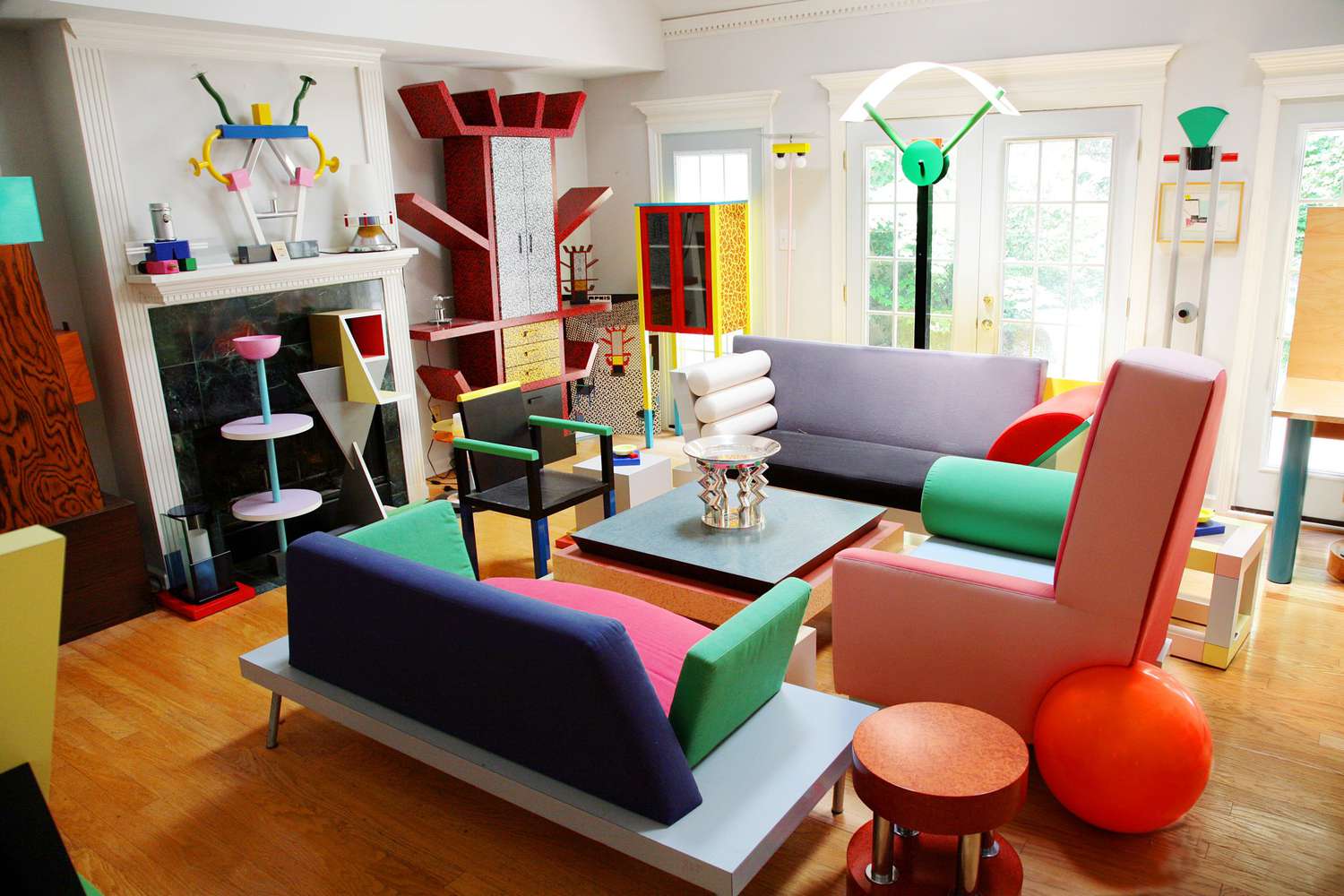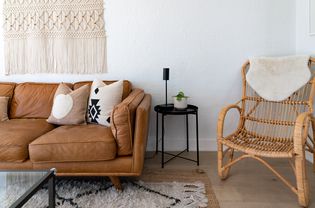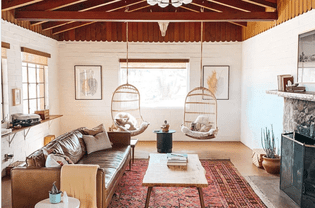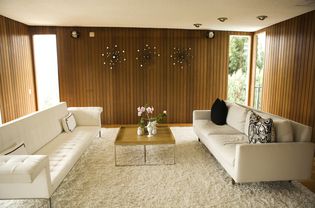Memphis Design is an influential postmodern style that emerged from the celebrated Memphis Design collective of Milan-based designers in the early 1980s. It was spearheaded by the legendary Italian designer Ettore Sottsass (1917-2007), and had an outsize impact on 80s design, challenging the status quo with its fearless mishmash of styles. Not for the faint of heart, Memphis Design was a polarizing style with its bold colors, clashing patterns, and radical approach to design. Today Memphis Design is the stuff of museum retrospectives and an enduring source of inspiration for modern-day interior designers, fashion designers, graphic and type designers, set and costume designers and more.
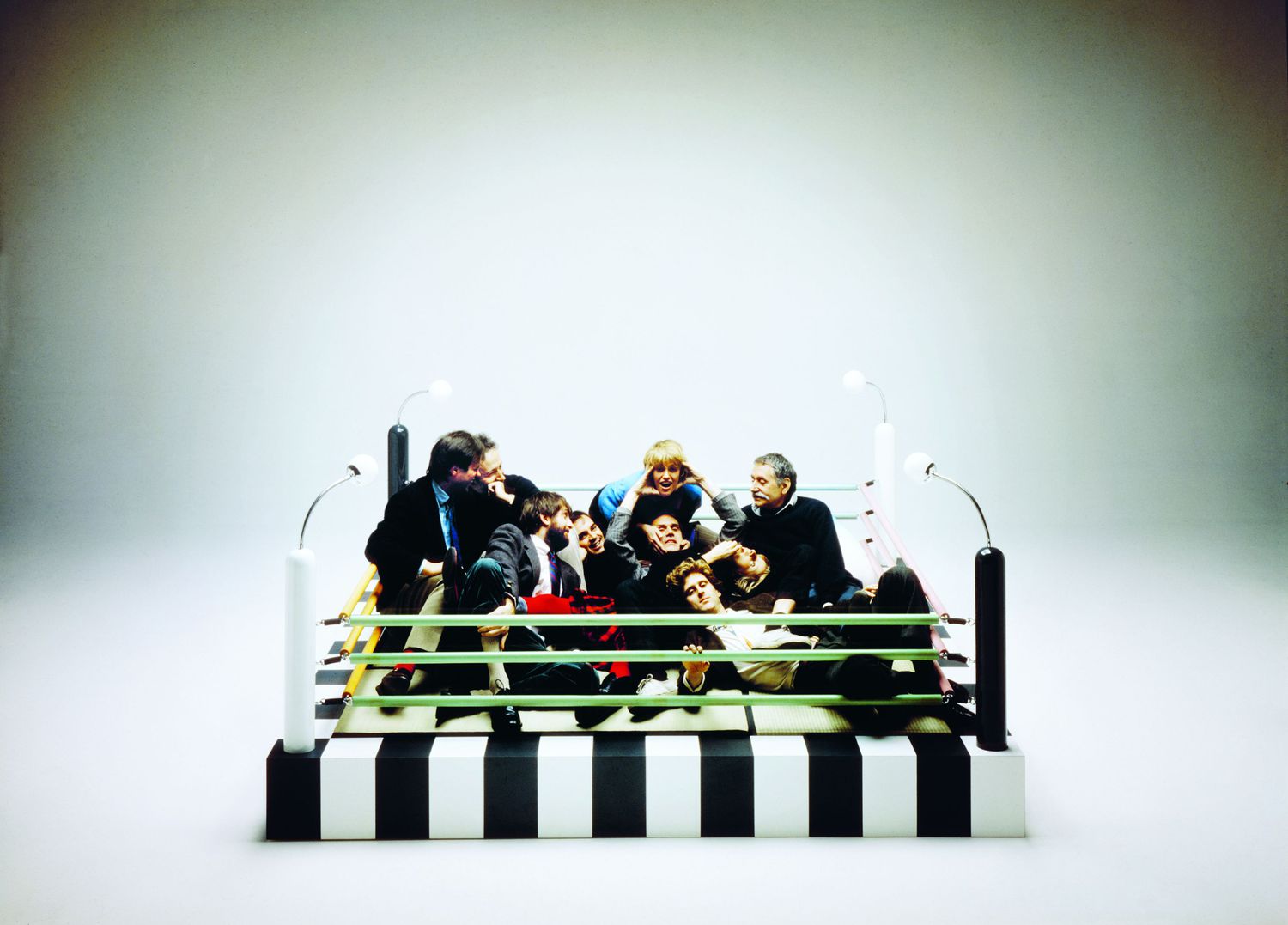
Studio Azzurro / Memphis, Milano / Vitra Design Museum
History of Memphis Design
Austrian-born, Italian architect and designer Ettore Sottsass formed the Memphis Design Group in his Milan living room in 1980, where he assembled a collective of daring designers from around the globe united in a desire to shake up the design world. They introduced their eye-catching, controversial, rule-breaking style with 55 pieces that debuted at Milan's Salone del Mobile in 1981, creating a buzzy love-it-or-hate-it kind of style that became instantly famous around the globe.
With its ornamental style infused with pop culture and historical references, Memphis Design was a reaction to the clean, linear mid-century modern aesthetic of the 1950s and 60s and the minimalism of the 1970s. Sottsass himself came out of the Radical Design and anti-design movements in Italy starting in the 1960s. His early work included sculptural furniture that he called "totems" that are now housed in prominent international museums like the Met in New York City. Memphis Design was influenced by the revived interest in the 1920s Art Deco movement as well as mid-century Pop Art, both of which were popular styles in the 1980s, with some 1950s kitsch thrown in for good measure. Some people found Memphis Design delightful. Others found it garish. One critic memorably described it as “a shotgun wedding between Bauhaus and Fisher-Price.”
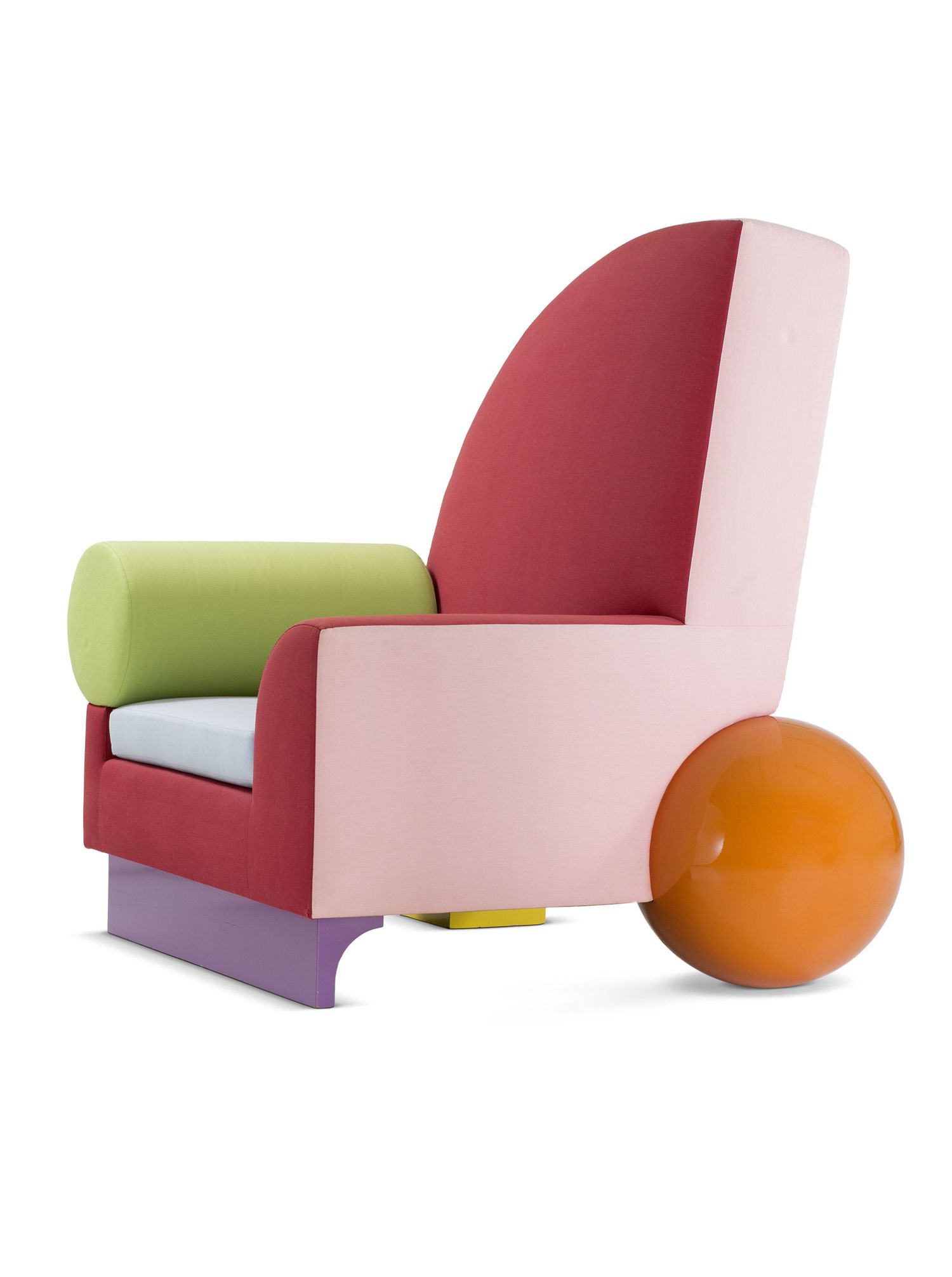
Jürgen Hans / Vitra Design Museum
Sottsass and his cohorts designed decorative metal and glass objects, home accessories, ceramics, lighting, textiles, furniture, buildings, interiors, and brand identities that were unexpected, playful, rule-breaking, and full of the idealism that the best designers have to make the world a better place. “When I was young, all we ever heard about was functionalism, functionalism, functionalism,” Sottsass once said. “It’s not enough. Design should also be sensual and exciting.”
Memphis Design influenced the popular culture, inspiring the set of popular TV shows like Pee-wee's Playhouse and Saved By the Bell. Celebrity 1980s superfans of the design style included legendary fashion designer Karl Lagerfeld and David Bowie. But Memphis Design was never everybody’s cup of tea, and the movement had fizzled before the decade was out, with Sottsass himself leaving the collective in 1985 and some of its other leading designers pursuing solo careers once the band broke up for good in 1988. In 1996, the Memphis-Milano brand was purchased by Alberto Bianchi Albrici, who continues to produce the collective's original 1980s designs. And starting in the 2010s as nostalgia for 80s style has returned, Memphis Design has become a wellspring of inspiration for multi-disciplinary designers, including fashion houses such as Christian Dior and Missoni, and new generations of interior designers, type designers, filmmakers and more.
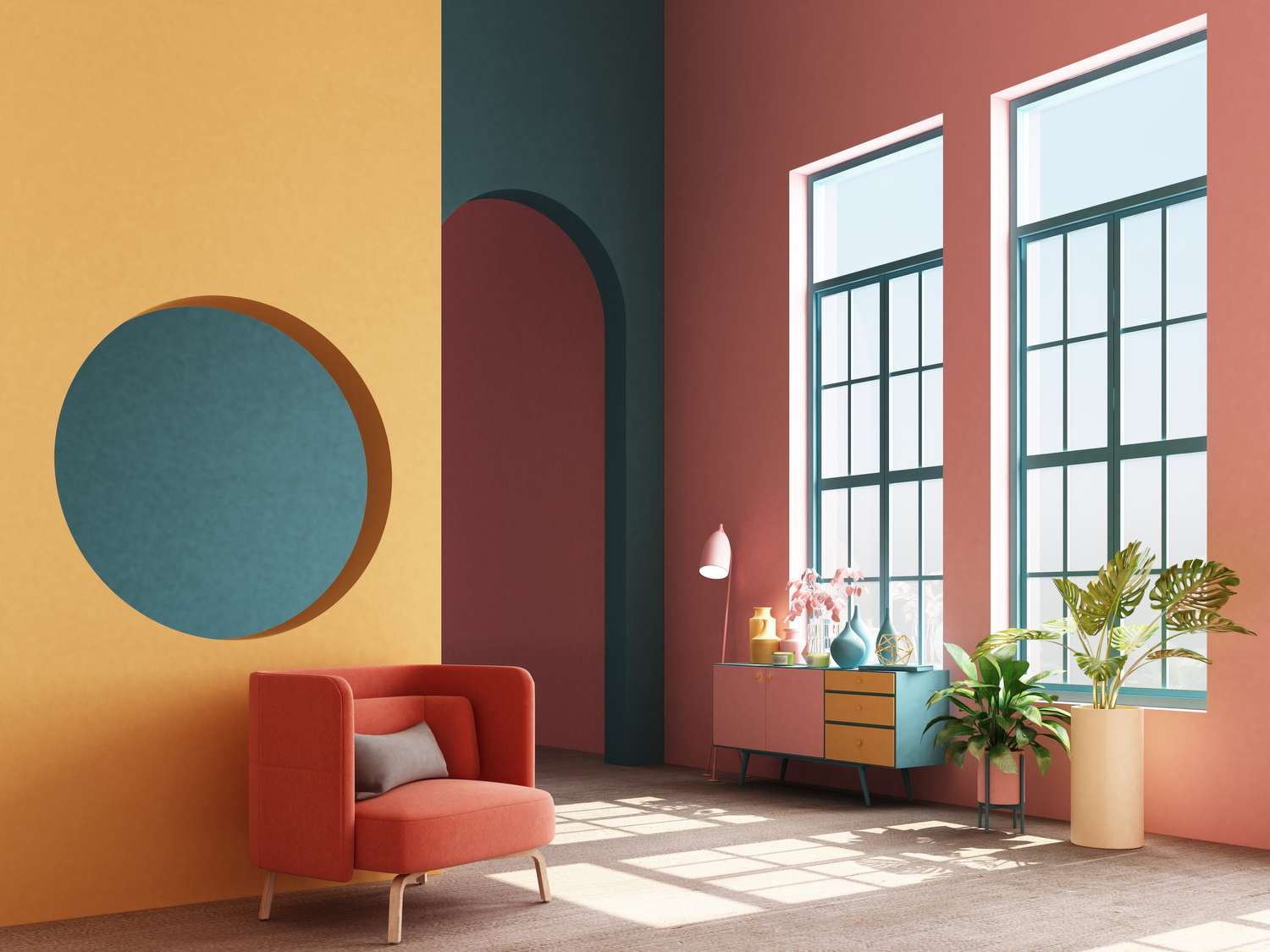
Phiwath Jittamas / Getty Images
So why was this Italian-born design movement called Memphis Design? Its name is a reference to the Bob Dylan song, Stuck Inside of Mobile with the Memphis Blues Again, from his 1966 Blonde on Blonde album that had been playing on a loop the night the Memphis Design collective had its first official meeting in Sottsass' living room.
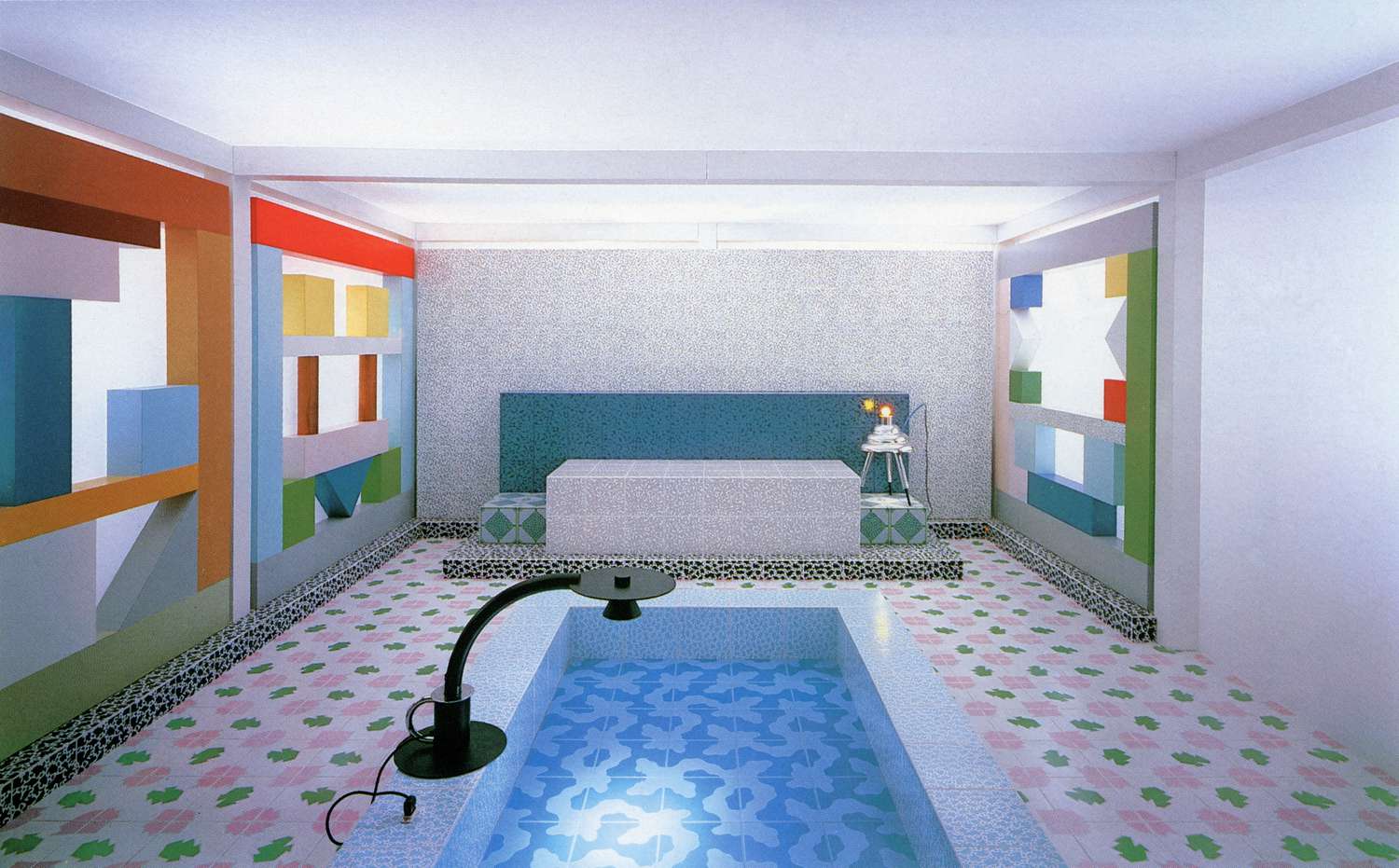
Marirosa Ballo / VG Bild-Kunst, Bonn 2021 / Vitra Design Museum
Key Characteristics of Memphis Design
- Challenged notions of conventional good taste
- Flouted the prevailing Bauhaus design philosophy that form follows function
- Designed to provoke an emotional response
- Loud, brash, spirited, playful, uninhibited
- Use of bright colors in unorthodox combinations
- Deliberate use of bold, clashing patterns
- Use of simple geometric shapes
- Use of black-and-white graphics
- Rounded edges and curves
- A fondness for squiggles
- Use of materials such as terrazzo and plastic laminate in various finishes
- Defying expectations by using unusual shapes in place of conventional ones, such as round legs on a table

:max_bytes(150000):strip_icc()/_DSC3035-89e8764848db4aa6901d9451b9b15923.jpeg)
